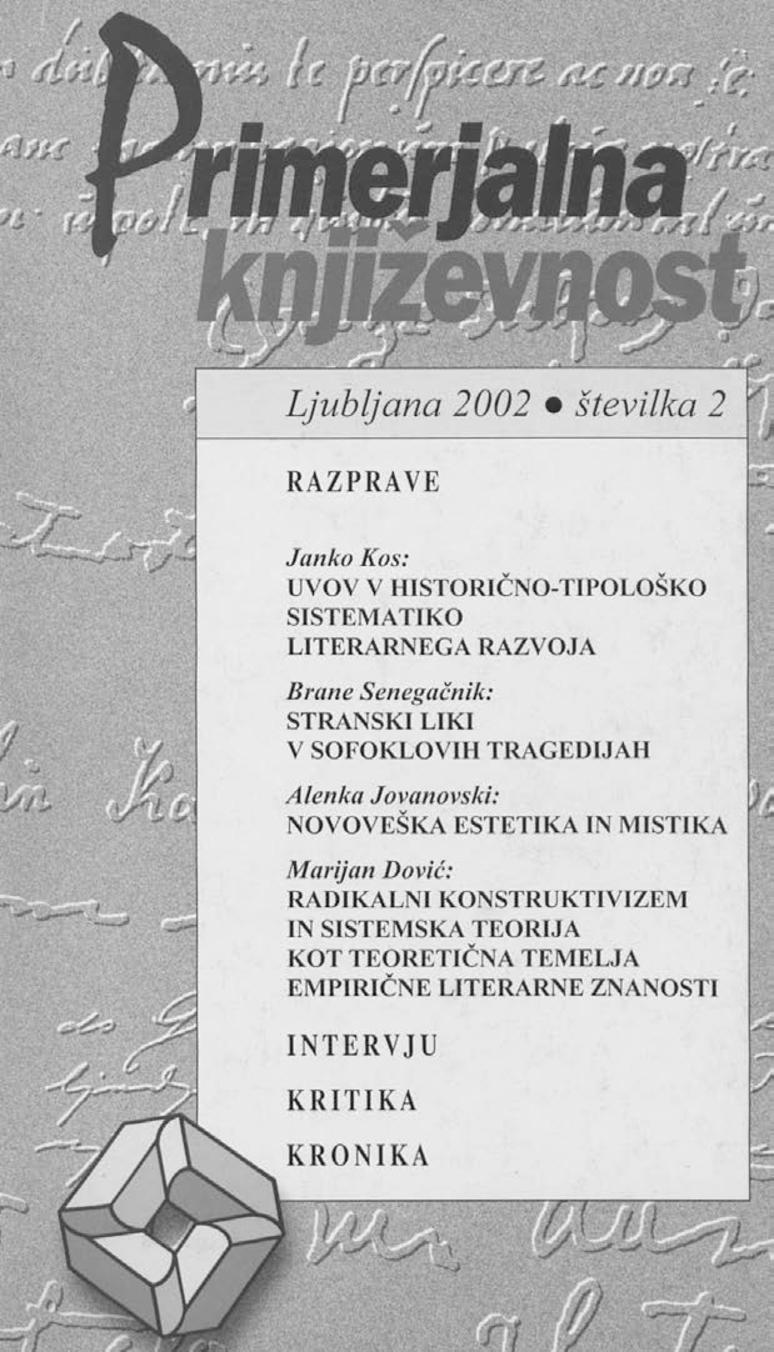Modern Aesthetics and Mysticism
Keywords:
aesthetics, mysticism, aesthetic experience, literary reception, epistemologyAbstract
The paper explores the experience of the beautiful as possibly a common ground between mysticism and modern aesthetics. The evolution of the latter – considered in the light of Gadamer’s thesis on the subjectification of aesthetics since Kant – is thus set against the background of Platonic philosophy and the mystical aesthetics of Pseudo-Dionysius the Areopagite. In Platonic philosophy, the beautiful as light had ontological value through which phenomena came into presence; reversely, through the phenomena, their invisible source of light came into presence. As a reflection of Light, each object was transparent, and therefore its appearance was a dimension that surpassed mere sensual value. Since its sensual beauty emanated from elsewhere, it could inspire love for the object and thus cause the turn to the source of light, paideia. In mystical aesthetics, the relationship of equality between the two dimensions of transparency and sensual appearance gained bias, as each sensual (or intellectual) image of God was considered to be a dissimilar image – that is to say, only a means of ascending towards “the super-essential Godhead”, and thus to be eliminated in the very process of ascending. The function of negating dissimilar images was to resist slippage into subject–object relationship, and to use the negation as a tool in experiencing emptiness, finally leading to unknowing. – Modern object, on the other hand, is an independent entity with a nontransparent sensual shell. This is the result of the subject’s lack of interest in the object as an object: the beautiful object exists only as much as it is made present by the light of the subject’s consciousness. According to Kant, the beautiful is not a property of the object, nor is it a property of its imagined picture, but it is the subject’s sense of inner harmony as the result of the play of its imagination and thought in perceiving the object. Since this play does not end up in knowledge of the object, the beautiful loses both ontological value and the access to truth. This reduction of the beautiful to the merely aesthetical notwithstanding, in Kant’s philosophical system aesthetic experience functions as a zone that relativizes the scientific way of gaining knowledge and refreshes our cognitive faculties with its playful nature. – Aesthetic experience is finally re-granted the power of grasping the truth with Heidegger, Gadamer and Iser. This return back, however, takes place on a new level. In experiencing its own inner harmony, the subject takes itself – Iser claims – for the object of its knowledge. But the truth or sense that it gets hold of in the process is limited to the range of its own subjectivity. In the 20th century, aesthetic experience remains limited to modern consciousness, failing to reach the region of the alétheia, the mystical unio, the unknowing. What it manages to form is only a pseudo-totality. But it might be enough to be aware of the two extremes of experiencing the beautiful to be able to catch, in the act of experiencing aesthetic pseudo-totality, a glimpse of – not the originally beautiful – but at least the consciousness that it exists.References
DIONIZIJ Areopagit (1996a): »Mistična teologija«, prev. Gorazd Kocijančič, v: Posredovanja: uvod v krščansko filozofijo, Celje: Mohorjeva družba, 106–114.
--- (1996b): »Nebeška hierarhija«, prev. Gorazd Kocijančič, v: Posredovanja: uvod v krščansko filozofijo [etc.], 284 –300.
GADAMER, Hans Georg (2001): Resnica in metoda, prev. Tomo Virk, sprem. bes. Darko Dolinar, Ljubljana: LUD Literatura.
HEIDEGGER, Martin (1991): Platonov nauk o resnici, prev. Dean Komel, Ljubljana: Fenomenološko društvo.
--- (1972): »Izvor umetniškega dela«, v: Nova filozofija umjetnosti, antologija tekstova; ur. Danilo Pejović, Zagreb: Nakladni zavod MH.
--- (1995): Na poti do govorice, prev. Dean Komel et al., Ljubljana: Slovenska matica.
ISER, Wolfgang (2001): Bralno dejanje. Teorija estetskega učinka, prev. Alfred Leskovec, sprem. bes. Darko Dolinar, Ljubljana: Studia humanitatis.
KANT, Immanuel (1999): Kritika razsodne moči, prev. in sprem. bes. Rado Riha, Ljubljana: ZRC SAZU.
KOCIJANČIČ, Gorazd (1996a): »Bivajoči in bivajoče«, v: Posredovanja: uvod v krščansko filozofijo [etc.], 115–180.
--- (1996b): »Lepo kot glasnik: krščanska estetika danes«, v: Posredovanja: uvod v krščansko filozofijo [etc.], 301–330.
McGINN, Brian (1992): The Foundations of Mysticism, 1. zv. v: The Presence of God: A History of Western Christian Mysticism, London: SCM Press.
RAHNER, Karl (1979): »The ’Spiritual Senses’ According to Origen«, v: Theological Investigations, New York: Seabury, 16, 81–102.
--- (1979): »The Doctrine of the 'Spiritual Senses' in the Middle Ages«, v: Theological Investigations [etc.], 104–134.
TATARKIEWICZ, Władysław (2001): Zgodovina šestih pojmov, Ljubljana: LUD Literatura.


